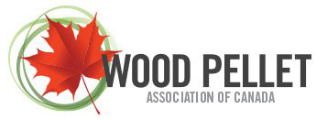

Virtual Event
WPAC Asian Wood Pellet Conference
February 16, 2021 at
7:00pm ET
On DEMAND
Additional Resources
Climate, Fact Sheets, Indigenous Cooperation and more...
View in Japanese | View in Korean
Canada’s Wood Pellets: Responsible, Renewable Clean Energy.
Today in Canada’s forest sector, an increasing amount of forest residuals left over after harvesting, sawmilling and low quality logs traditionally left as waste are being turned into wood pellets. These pellets are sold around the world to produce clean energy, displace fossil fuels and support efforts to meet important global climate change targets.
>>Read More
The Role of Wood Pellets in Meeting Climate Change Goals
For decades, wood waste from manufacturing was burned in beehive burners and unwanted logs, branches and tops from harvesting were either left on site, creating a fire and insect risk, or burned in piles releasing CO2 and fine particulate without generating any economic or energy benefit. Today, an increasing amount of that waste is being turned into wood pellets in Canada. Those pellets are used around the world to produce clean energy and to displace fossil fuels – supporting efforts to meet important global climate change targets.
>>Read More
Canada’s Wood Pellets: From Sustainably Managed Forests
Canada’s forests are some of the most resilient and sustainably managed in the world. They are subject to stringent environmental regulation, careful management and extensive third-party certification. That’s why customers requiring sustainable biomass products have confidence in the Canadian wood pellet sector.
>>Read More
Canada’s Wood Pellets: Leading the Way in Certified Fibre
Canada is a leading supplier of wood pellets from certified sustainable and legal sources. Today, electric power stations in Europe and Asia are using Canadian wood pellets to displace coal and reduce fossil GHG emissions. For example, Drax Power operates the world’s largest biomass power station providing about six percent of the UK’s electricity supply. Drax was a former coal power station that converted to wood pellets, thereby reducing its GHG emissions by more than eighty percent. Many of these wood pellets are imported from Canada.
>>Read More
Indigenous Communities in Canada: Sustainable Economic Development at Home; Sustainable Biomass Energy to the World
In Canada, June 21, the summer solstice, has been designated National Indigenous Peoples Day. As stated by the Government of Canada, this is a day to “recognize and celebrate the unique heritage, diverse cultures and outstanding contributions of First Nations, Inuit and Métis peoples.” It is also a time to look forward to the opportunities that lie in front of us.
>>Read More
Making the Most of Forest Residuals
Canada’s forests are some of the most resilient and sustainably managed in the world. They are sub-ject to stringent environmental regulation, careful management and extensive third-party certifica-tion. That’s why customers requiring sustainable biomass products have confidence in the Canadian wood pellet sector.
>>Read More
カナダ産木質ペレットの特徴とは。ぜひ下記資料をご覧ください。
(View Resources in other languages)
Japanese
- カナダの木質ペレットと責任ある林産業. ( Overview of Canadian Pellets & Responsible Forestry)
- 気候変動に対する目標達成に向けた木質ペレットの役割. (The Role of Wood Pellets in Meeting Climate Goals )
- カナダの木質ペレット – 持続可能な管理の森から (Canada’s Wood Pellets: From Sustainably Managed Forests )
- カナダの木質ペレット – 出自の認証で世界をリード (Canada’s Wood Pellets: Leading the Way in Certified Fibre )
- カナダの先住民コミュニティ ( Indigenous Communities in Canada )
- カナダの木質ペレット – 林地残材を最大限に活用. (Canada’s Wood Pellets: Making the Most of Forest Residuals)
캐나다 목재펠릿에 관한 사실을 다루는 이 기사들을 읽어보세요.
Korean
- 캐나다펠릿및책임있는임산업에대한개요 (Overview of Canadian Pellets & Responsible Forestry)
- 기후목표달성에대한목재펠릿의역할 (The Role of Wood Pellets in Meeting Climate Goals )
- 지속가능하게경영된산림으로부터생산된캐나다목재펠릿 (Canada’s Wood Pellets: From Sustainably Managed Forests )
- 인증섬유에서앞장서는캐나다목재펠릿 (Canada’s Wood Pellets: Leading the Way in Certified Fibre )
- 캐나다의원주민커뮤니티 (Indigenous Communities in Canada )
- 산림잔여물을최대한활용하는캐나다목재펠릿 (Canada’s Wood Pellets: Making the Most of Forest Residuals)






